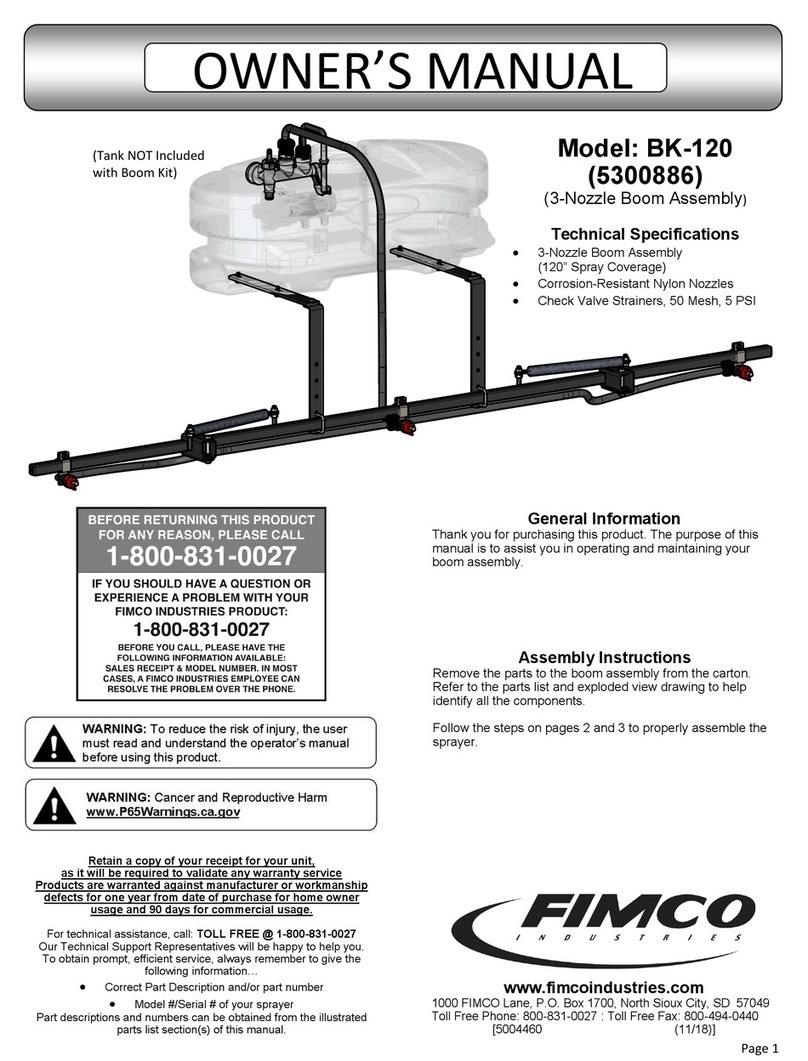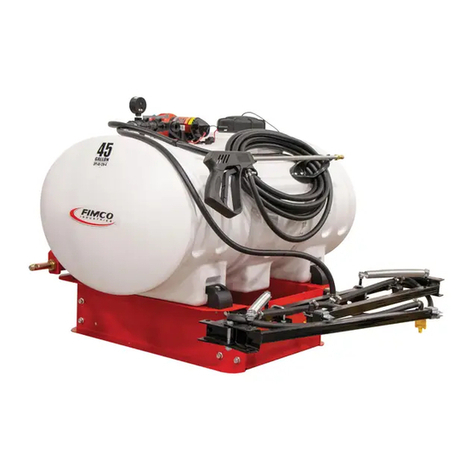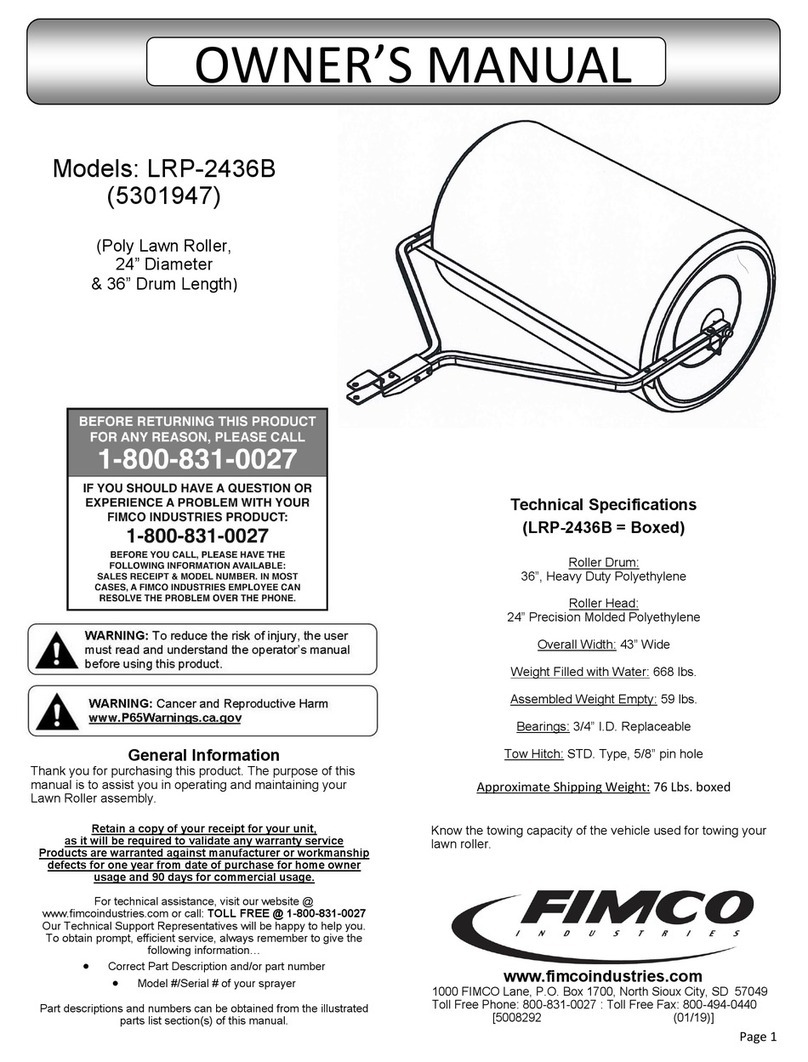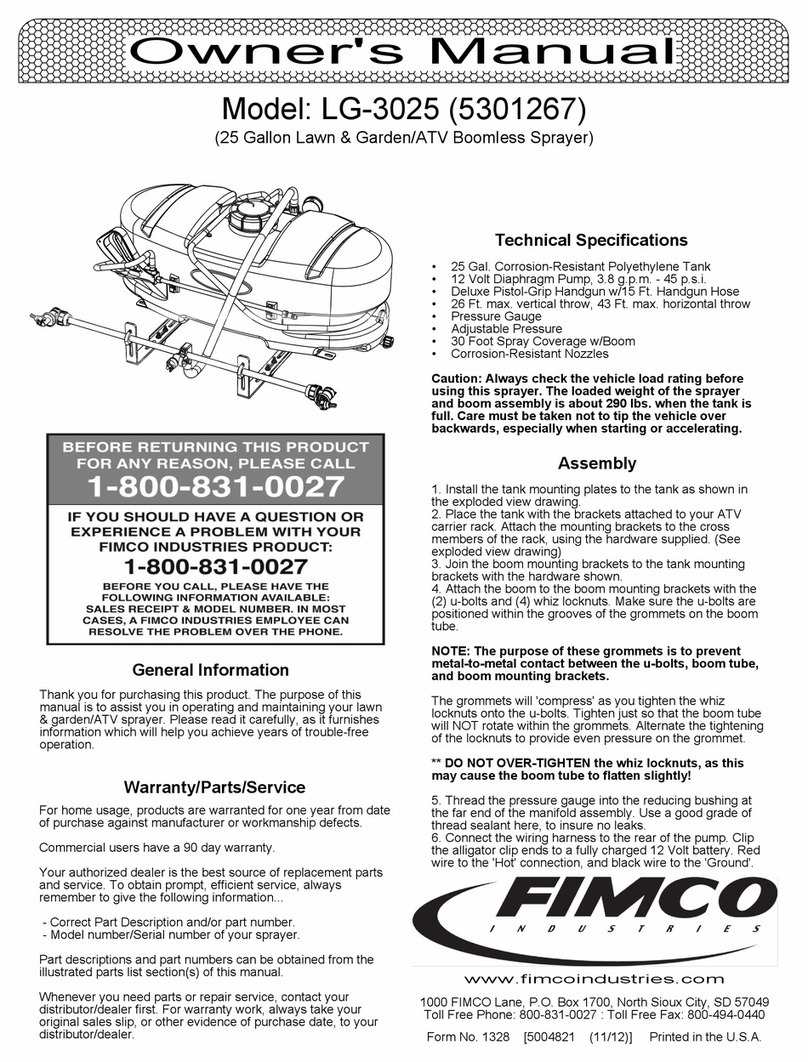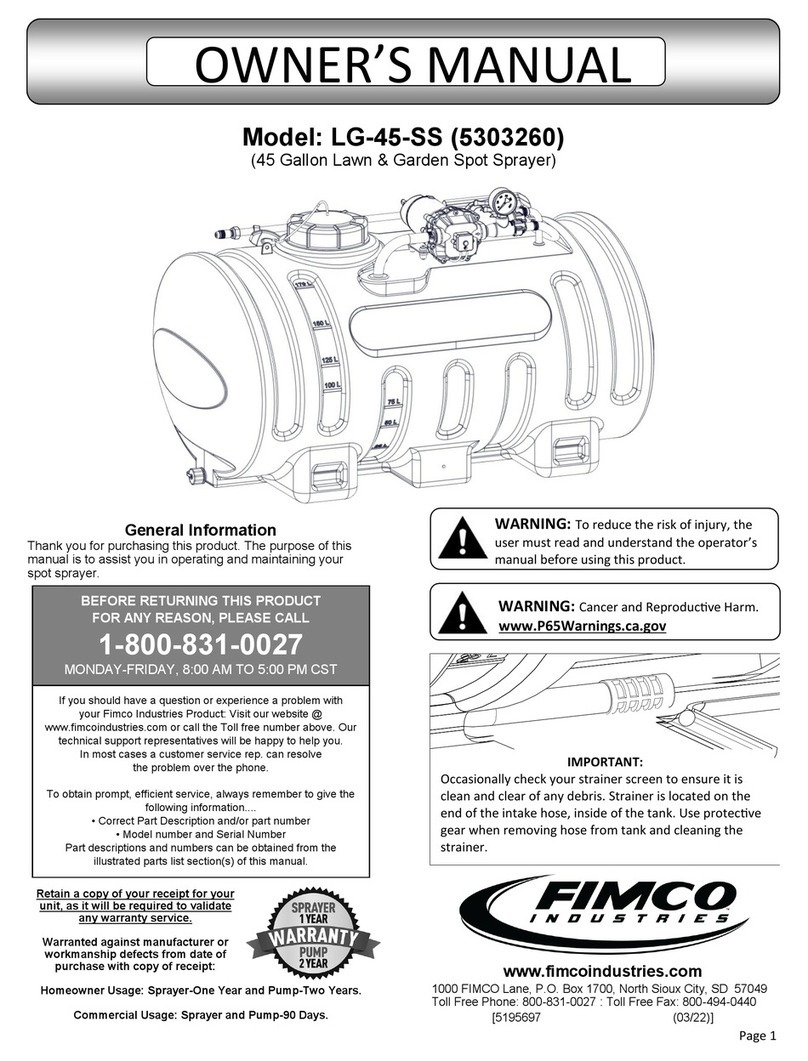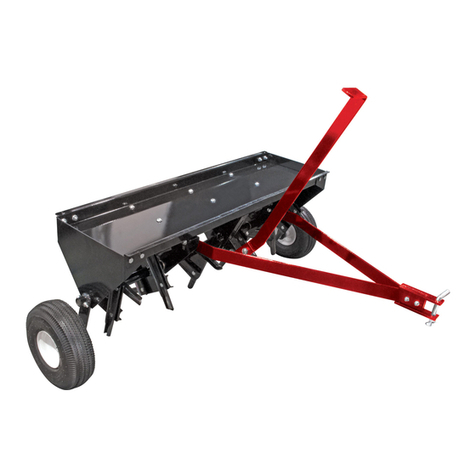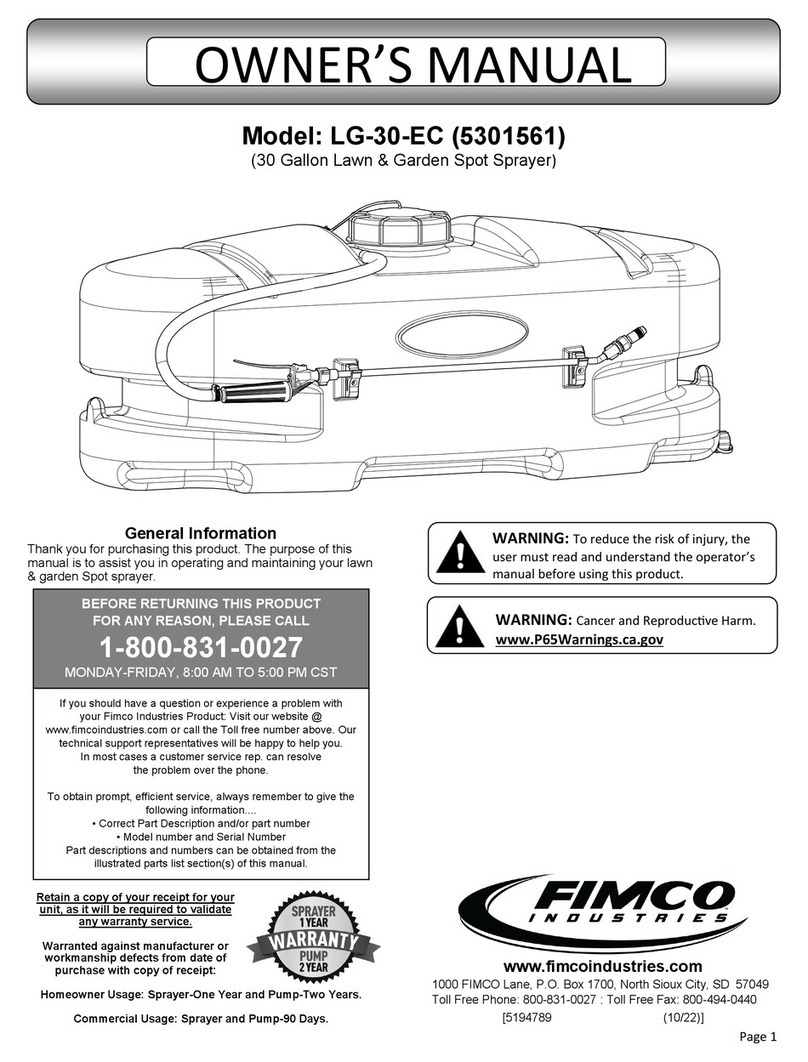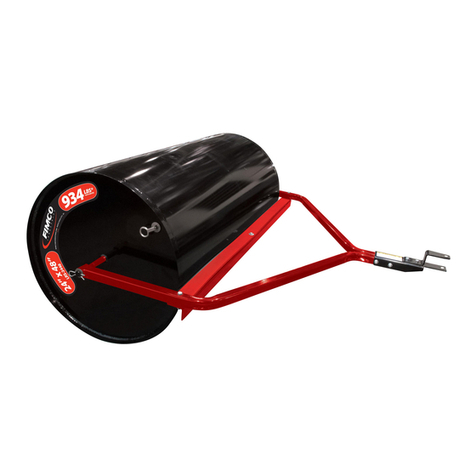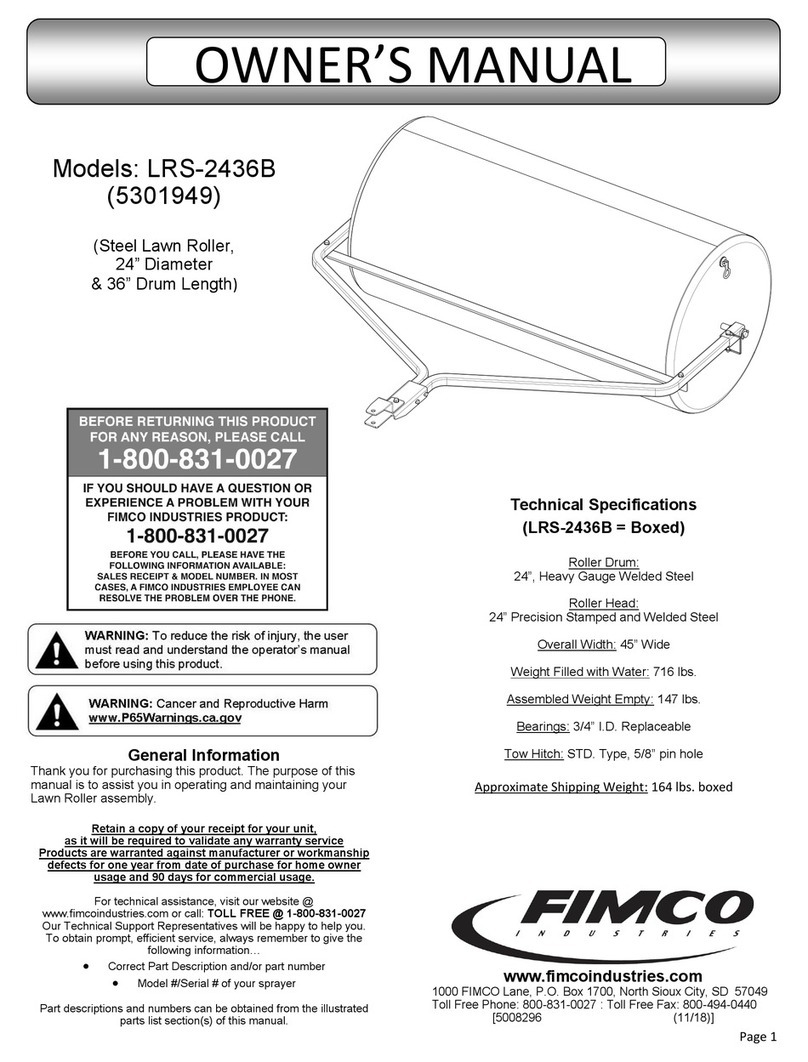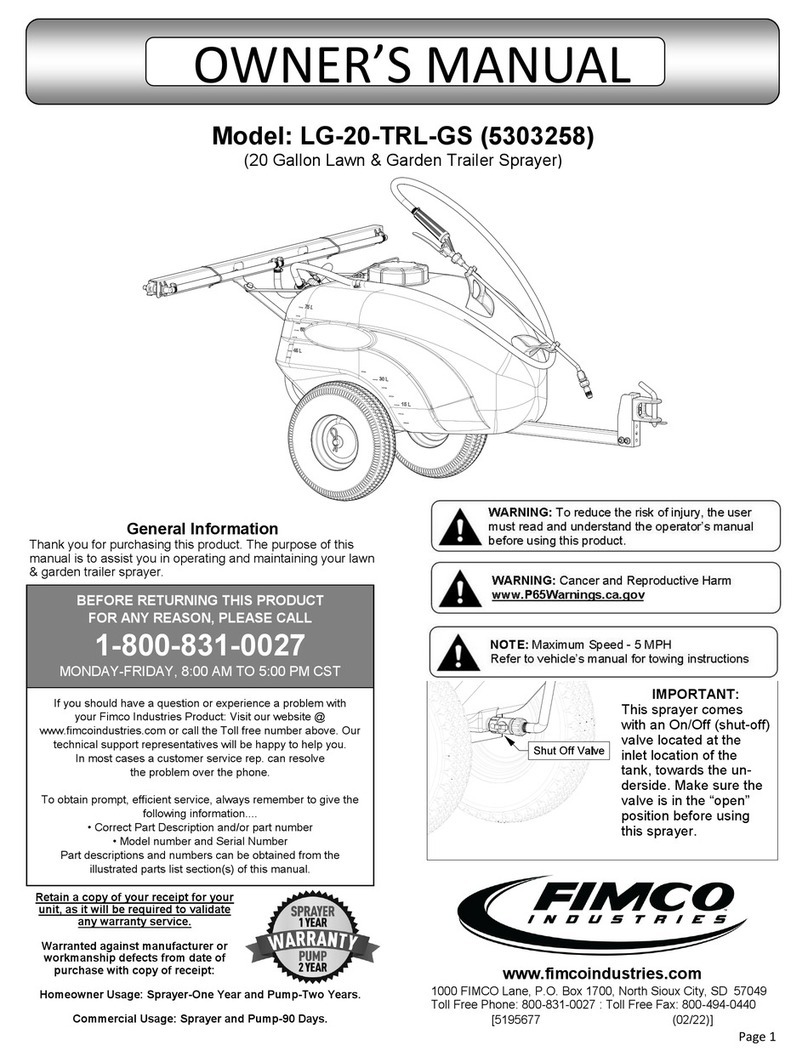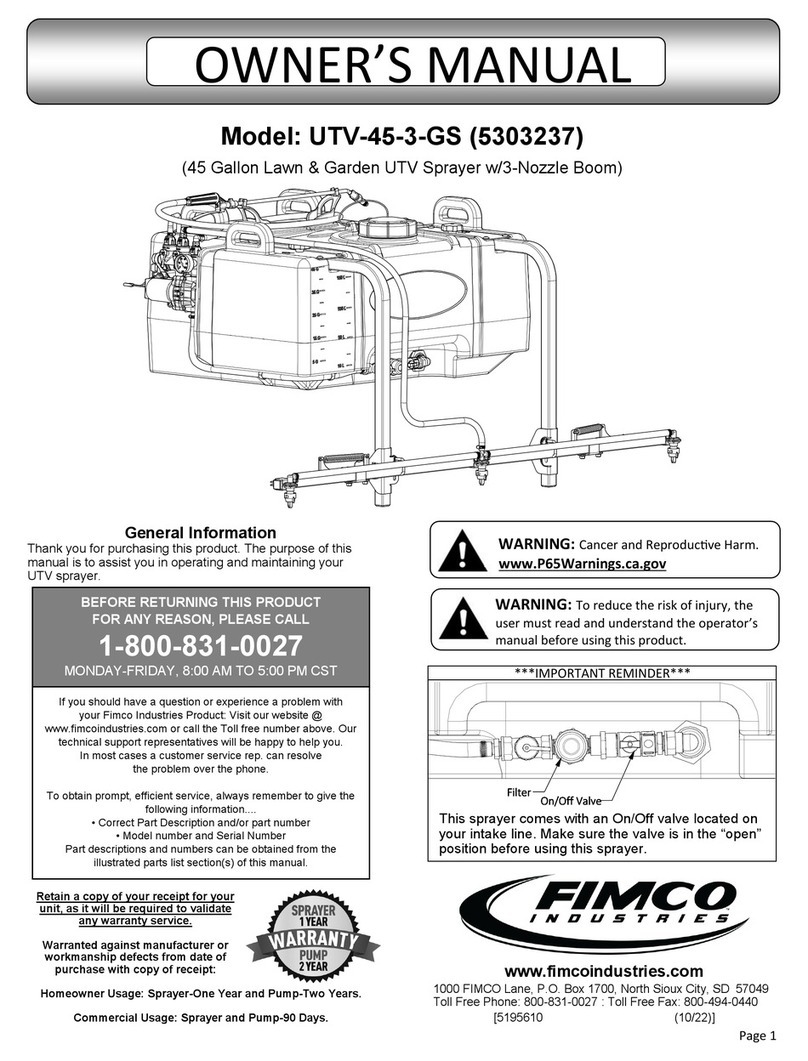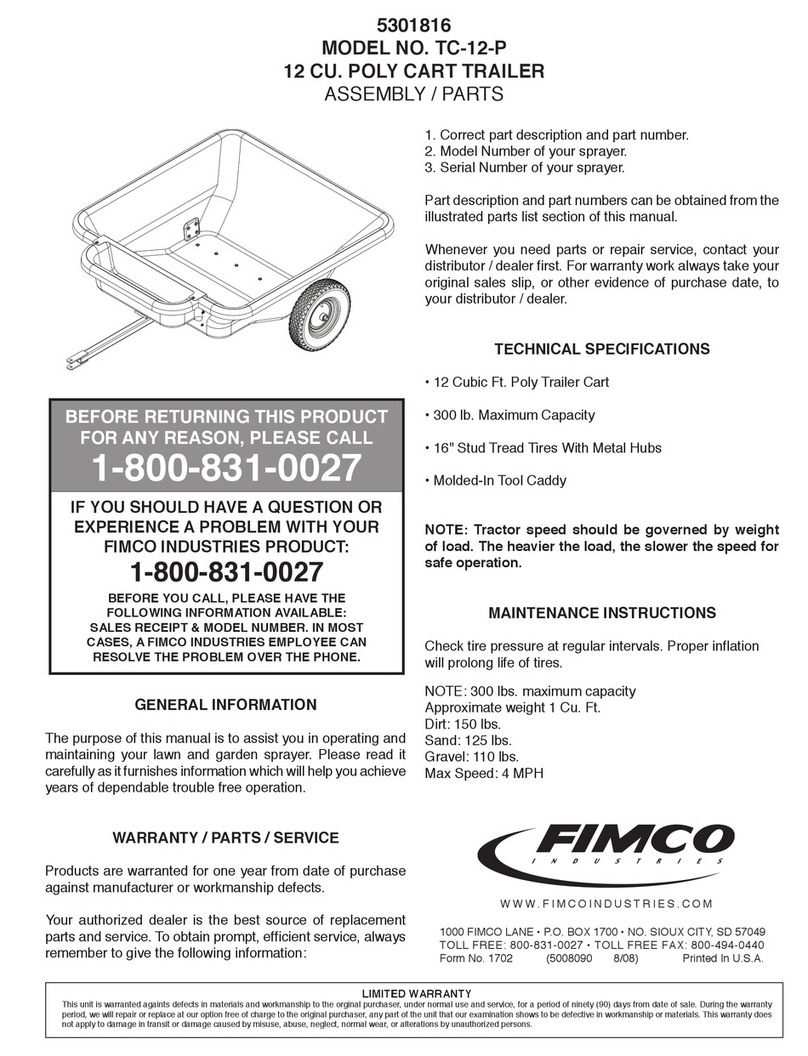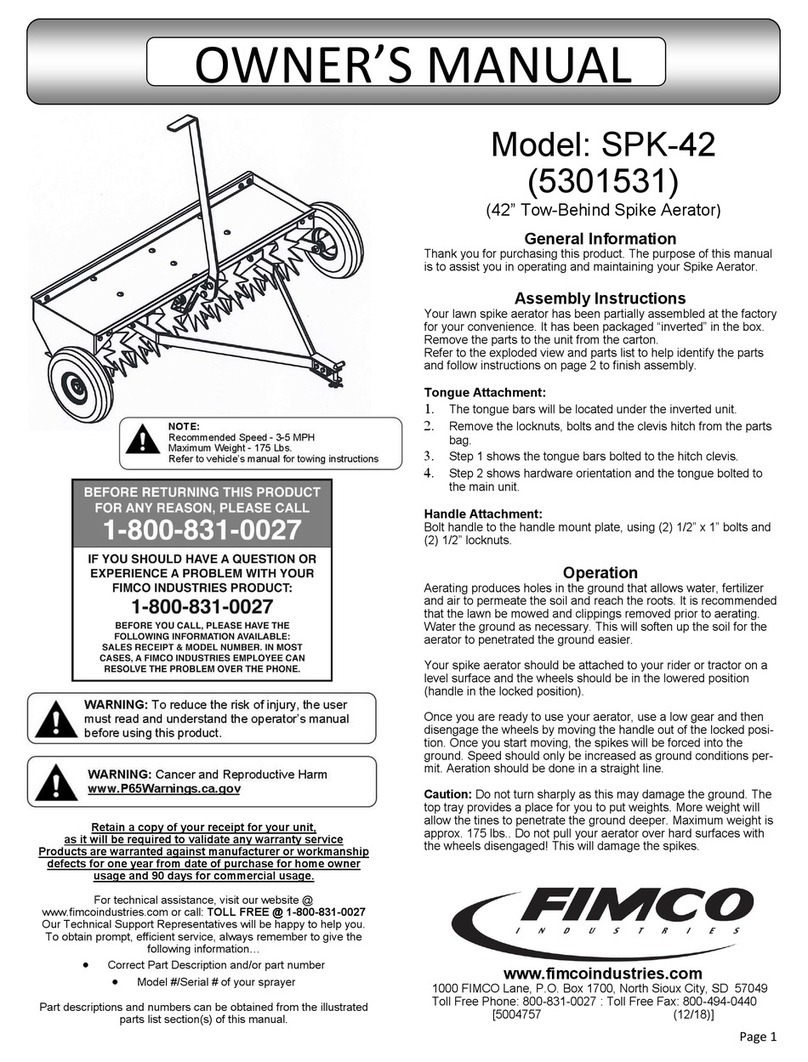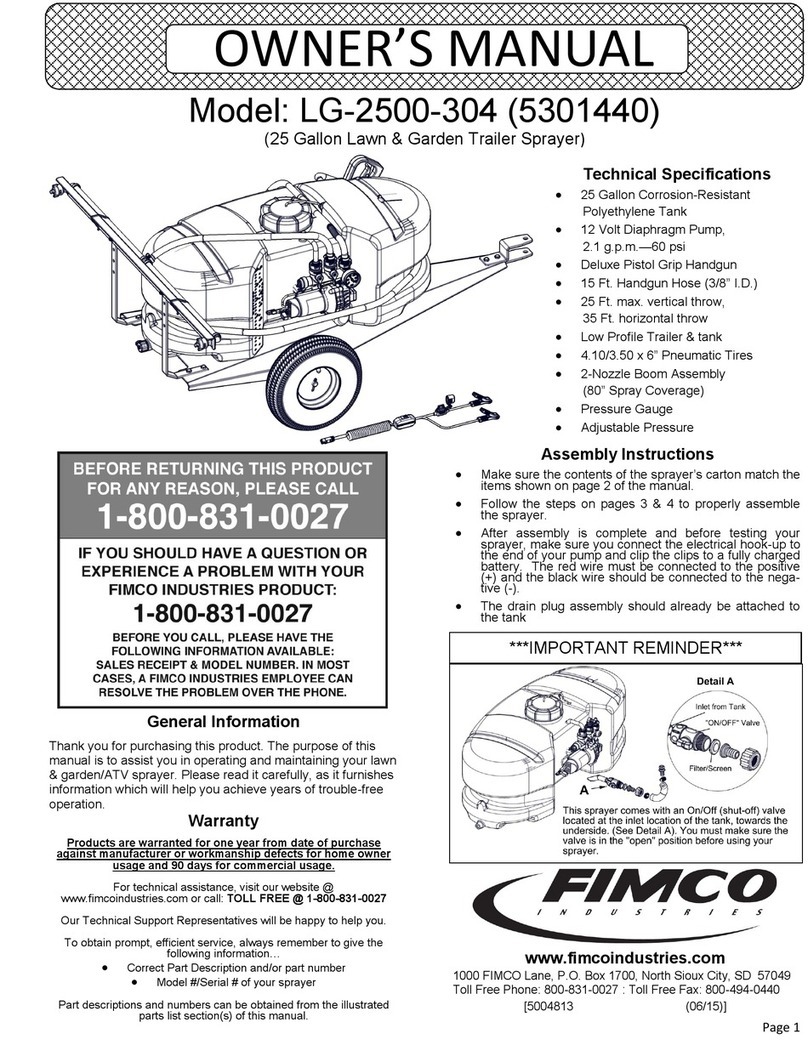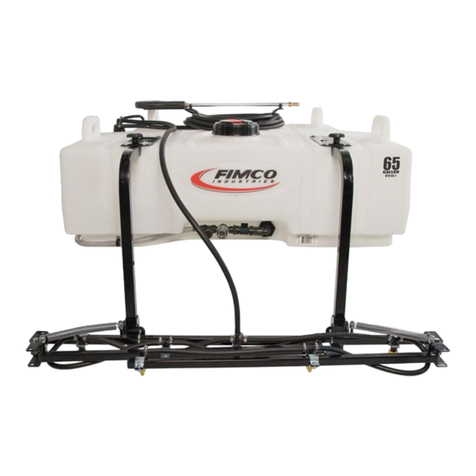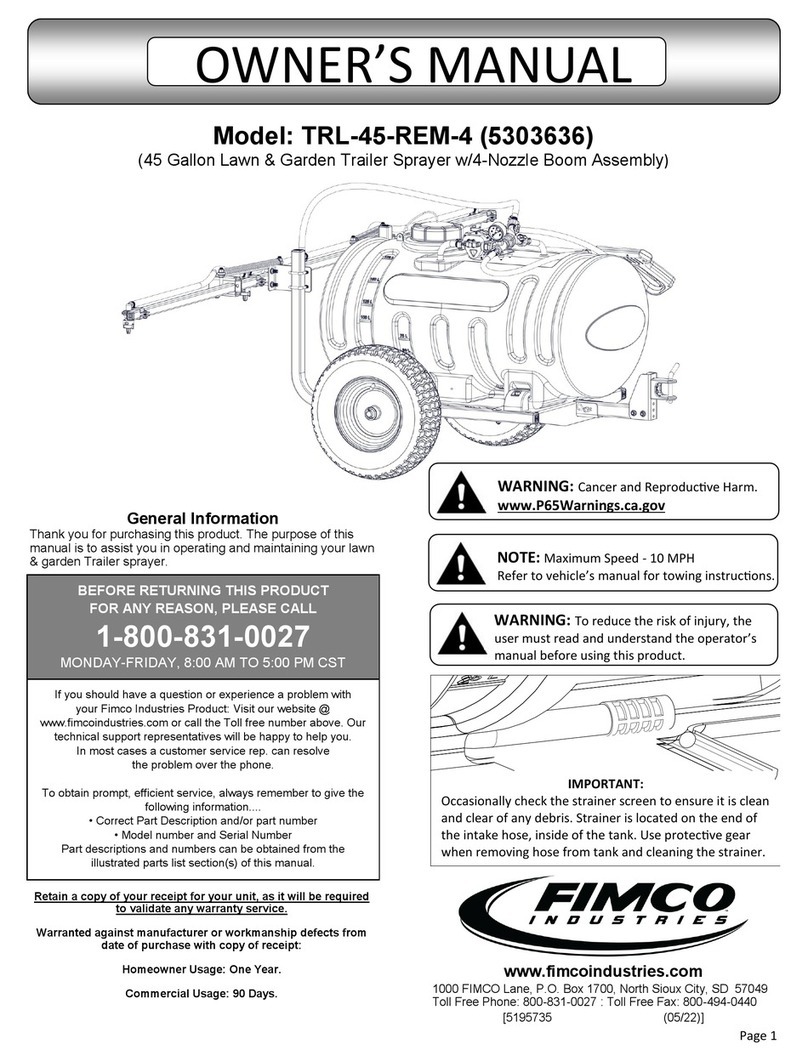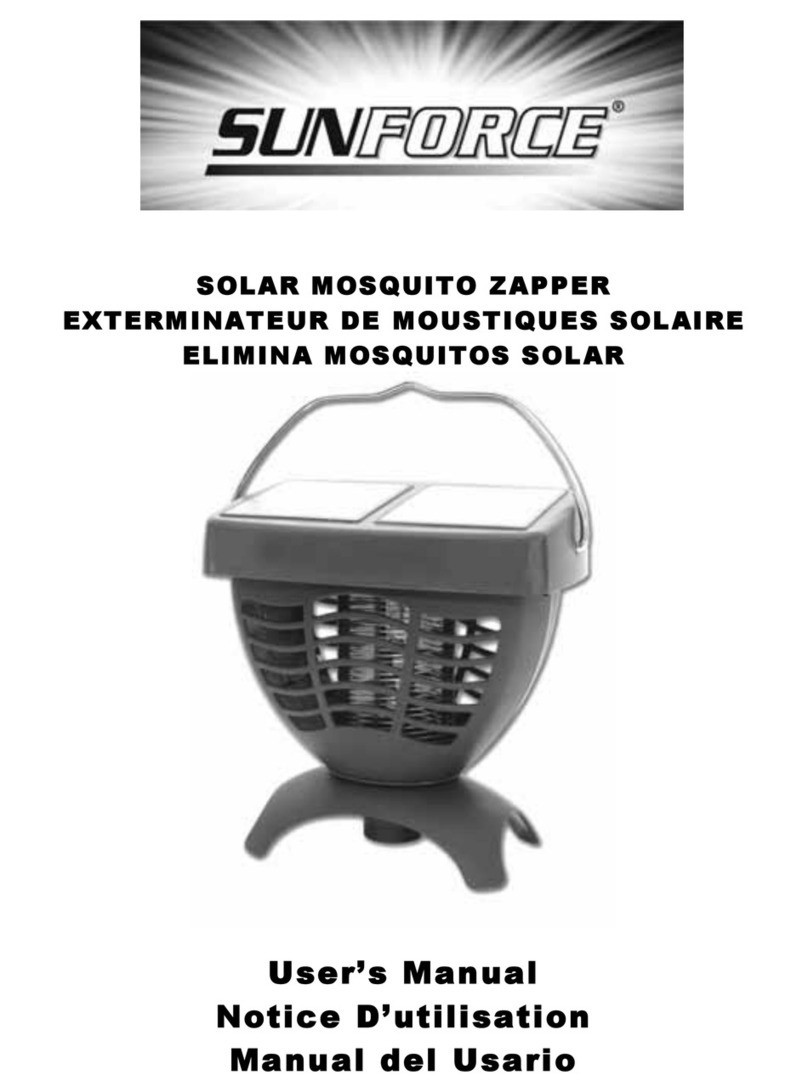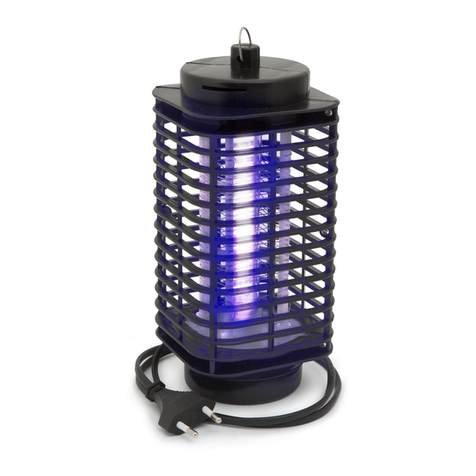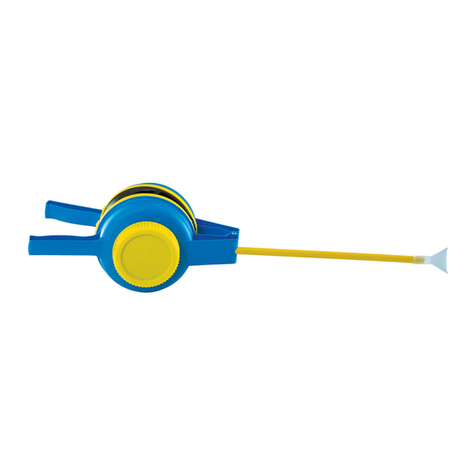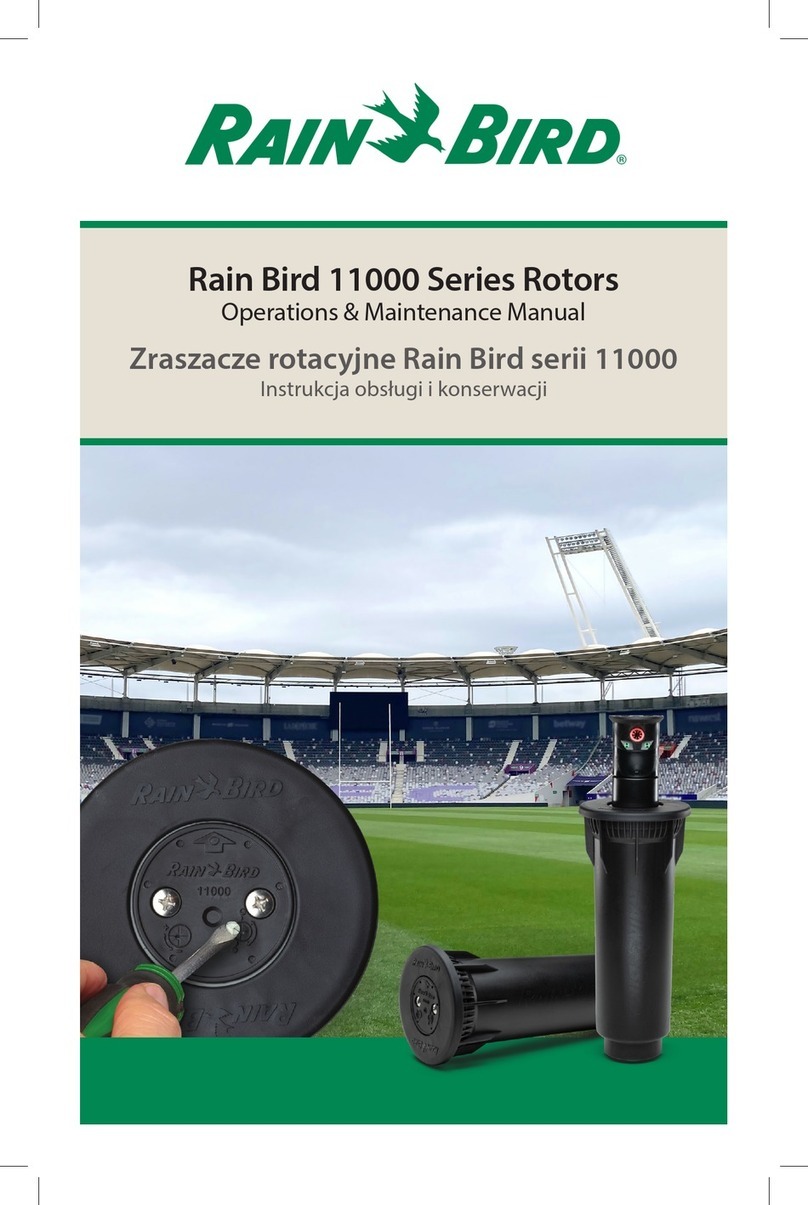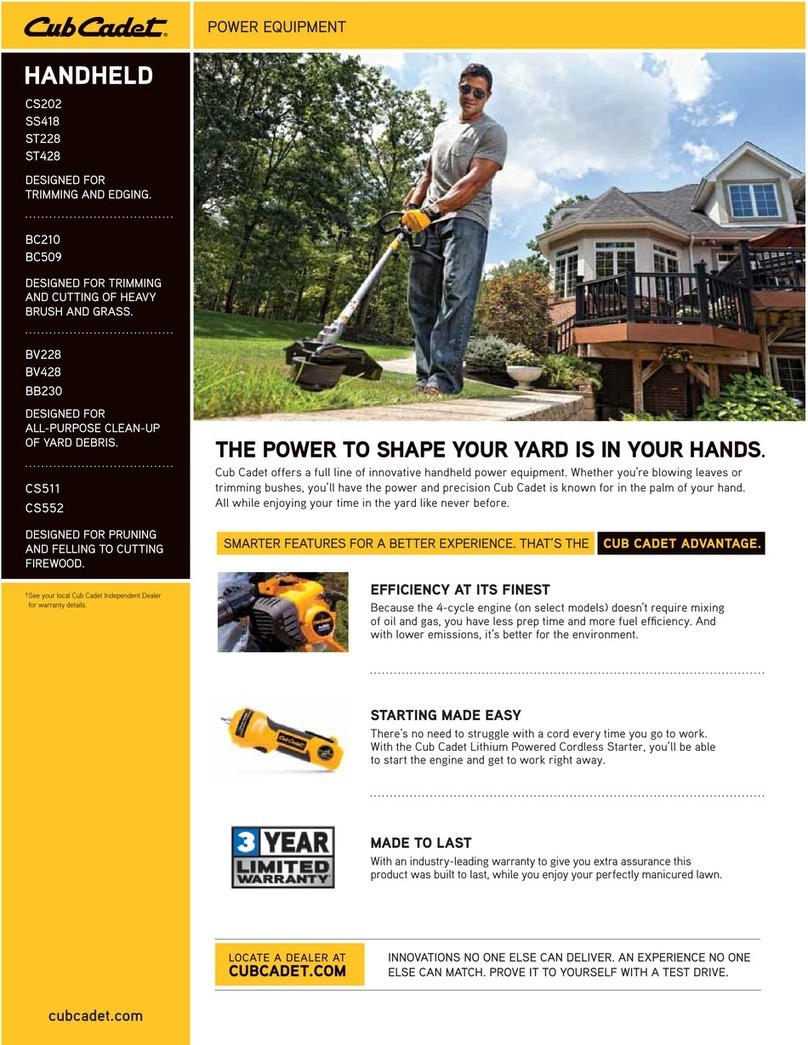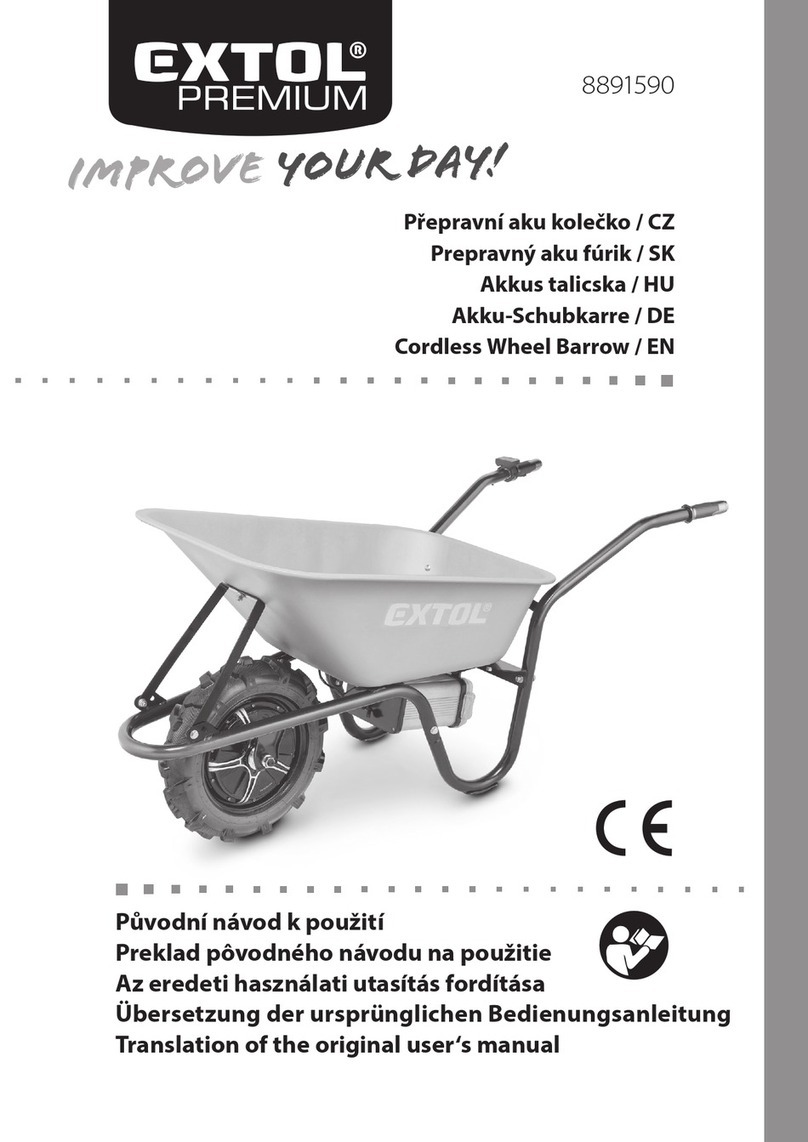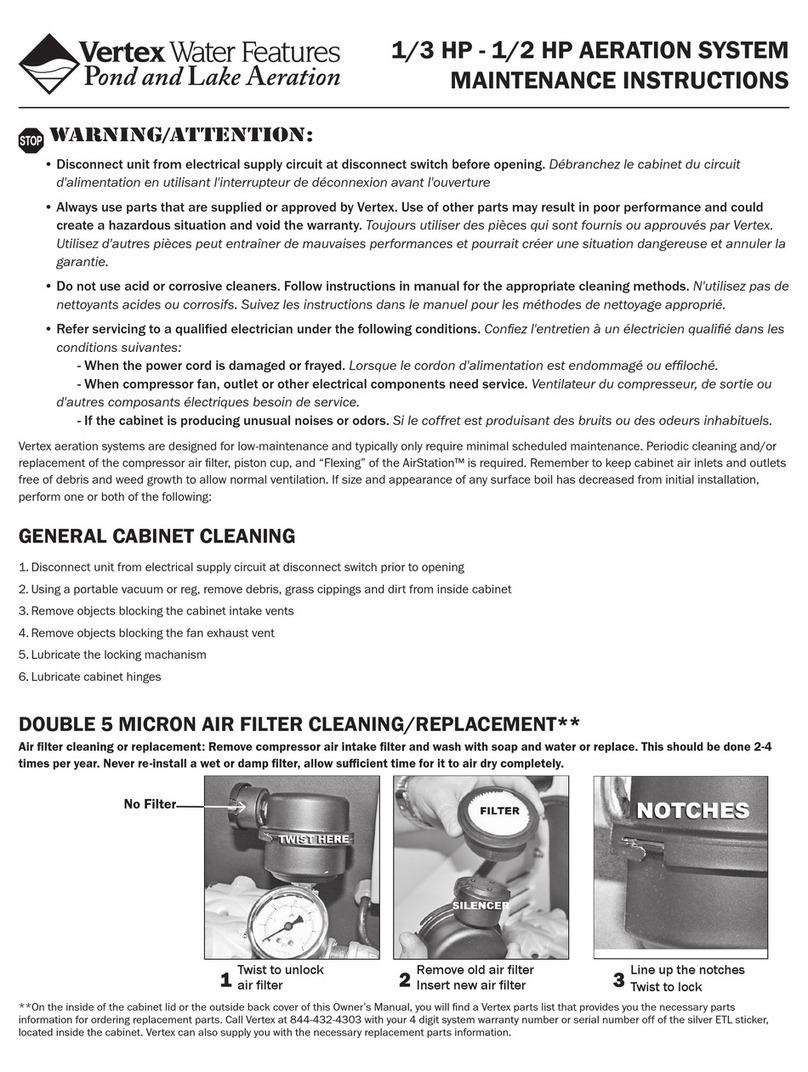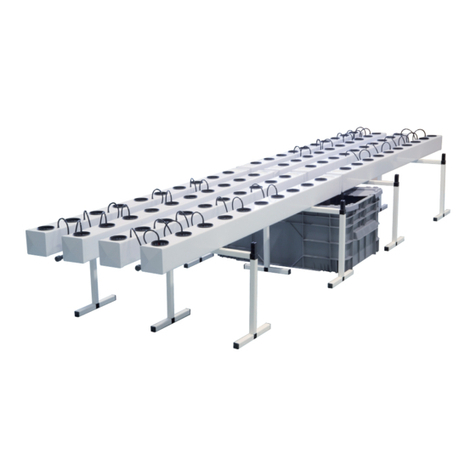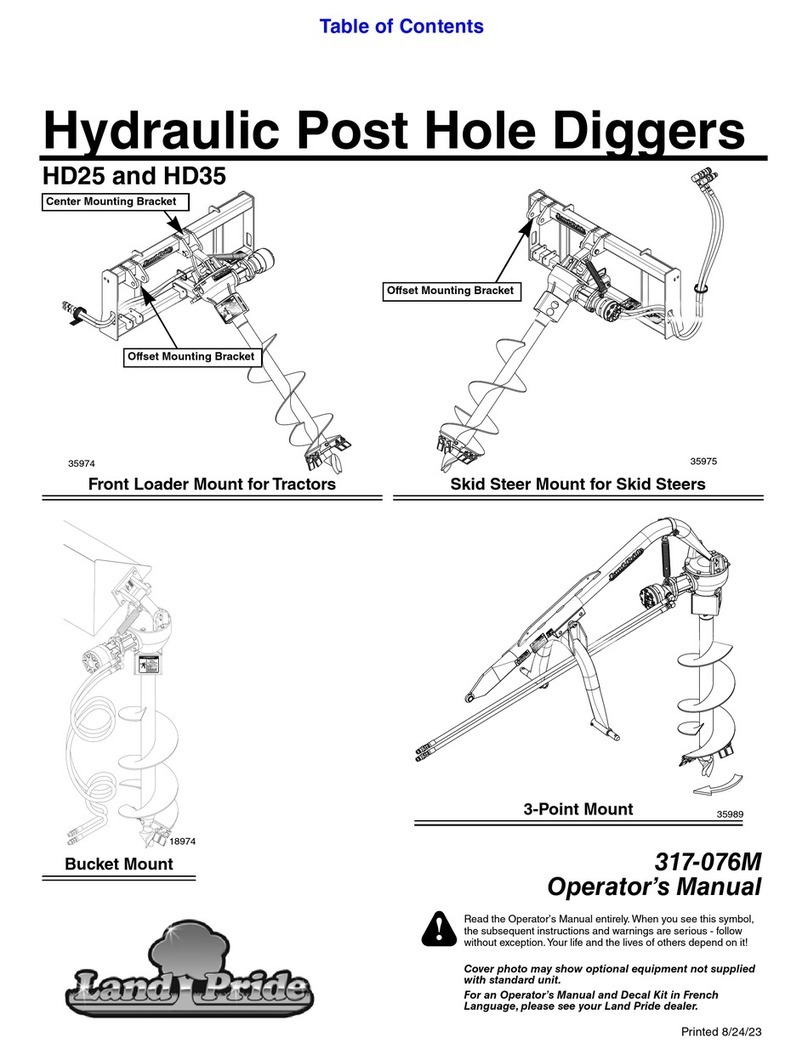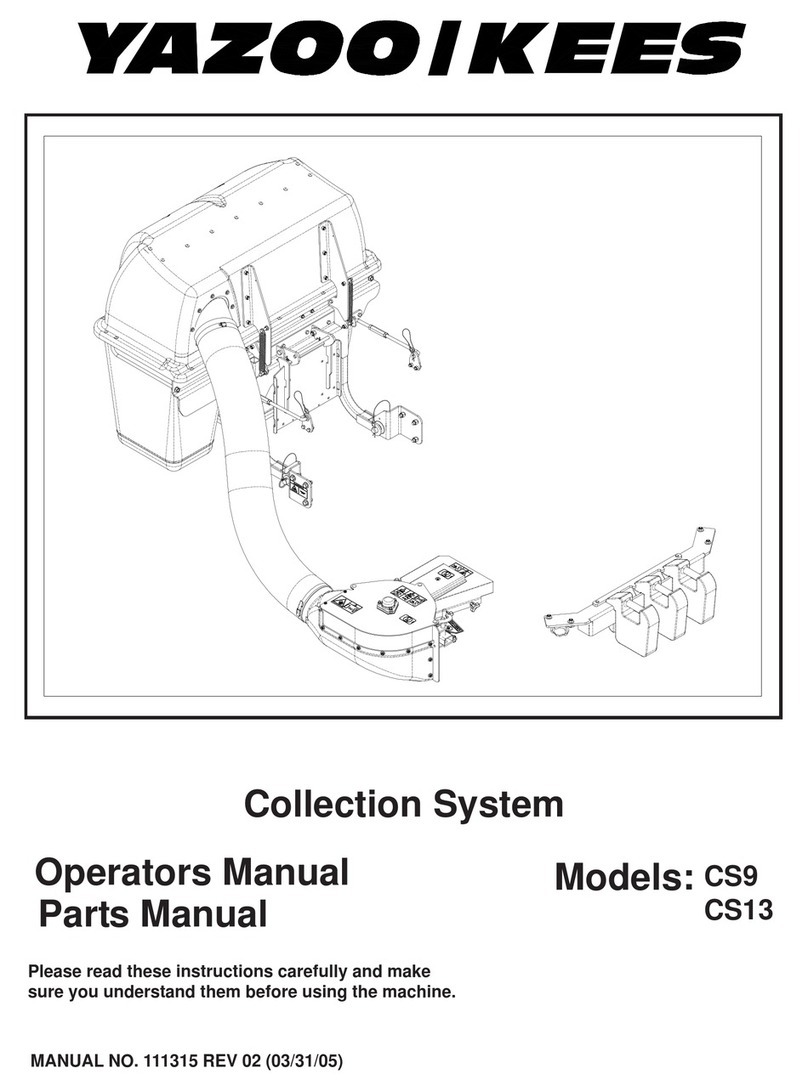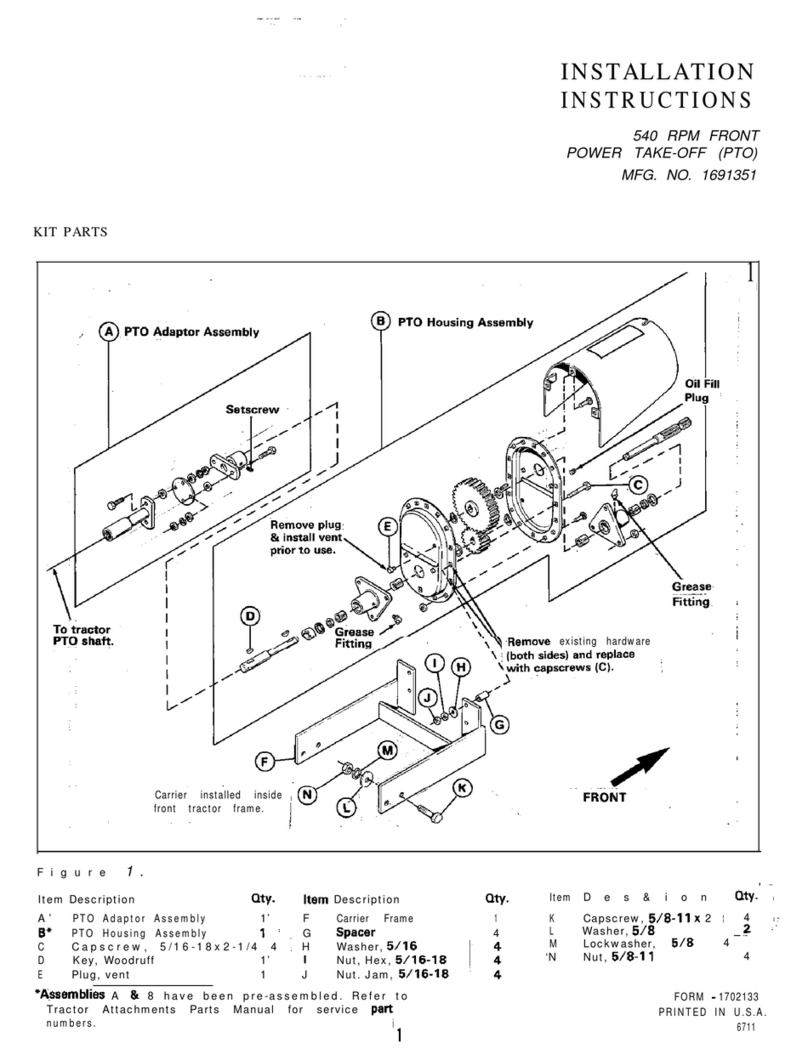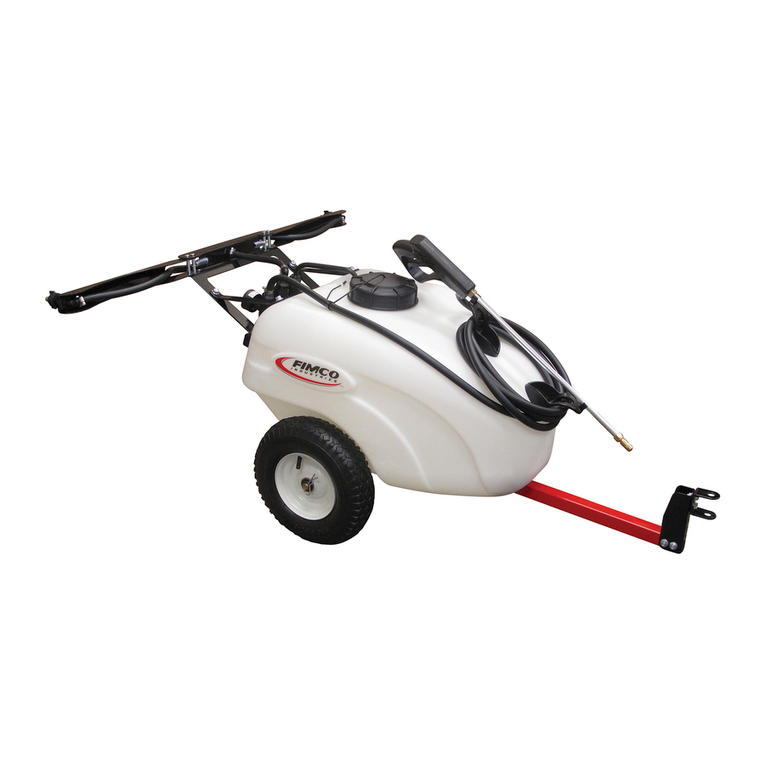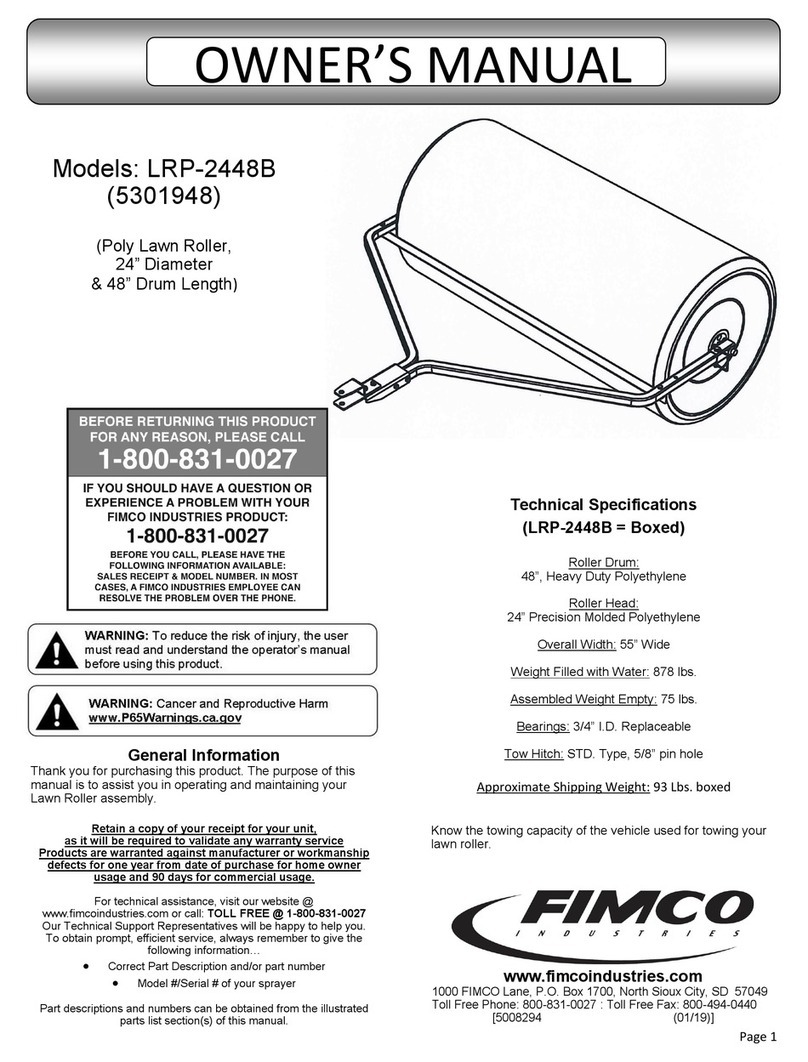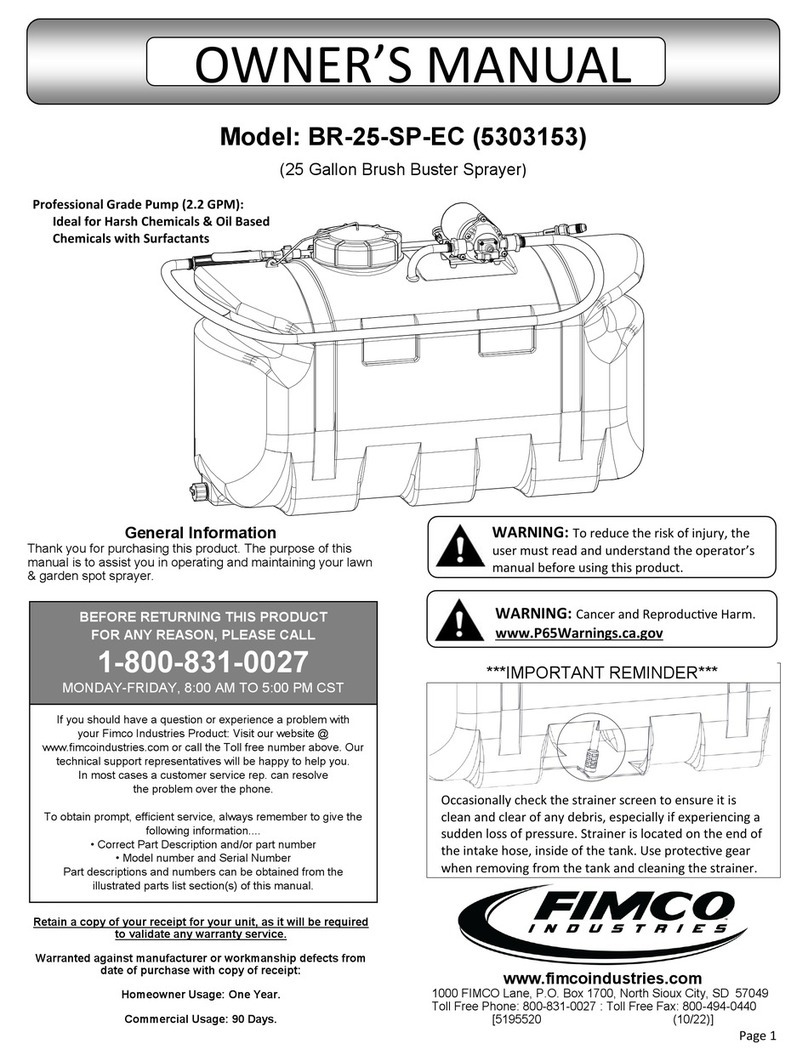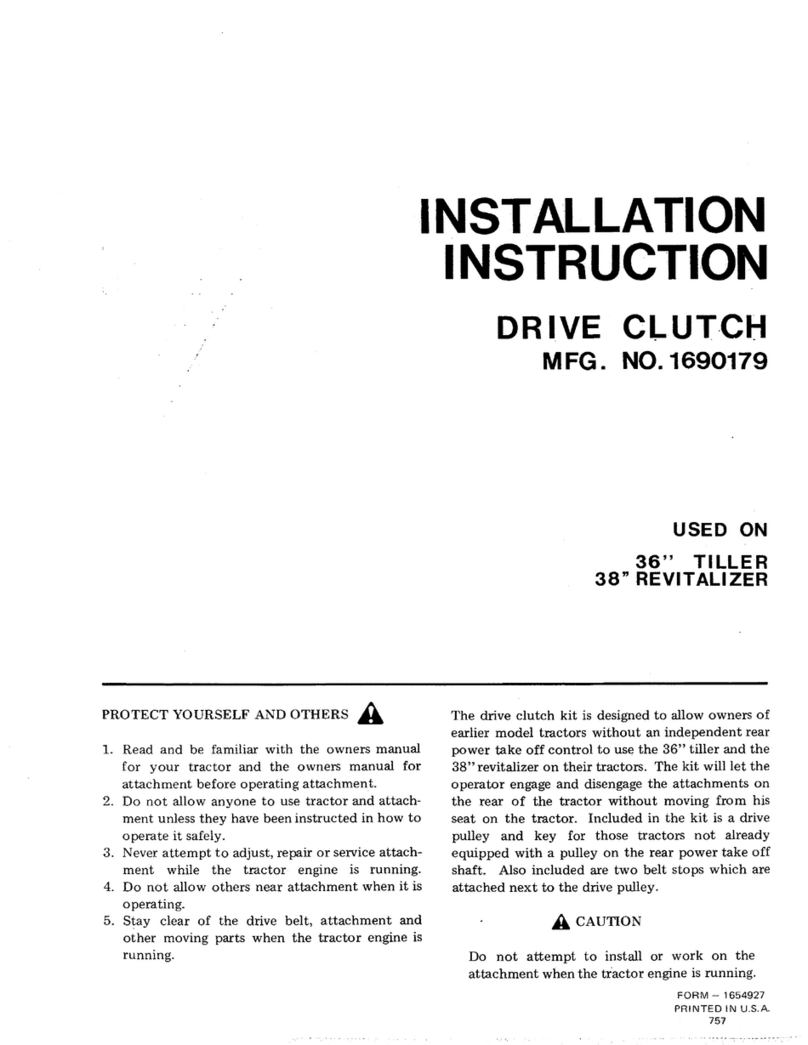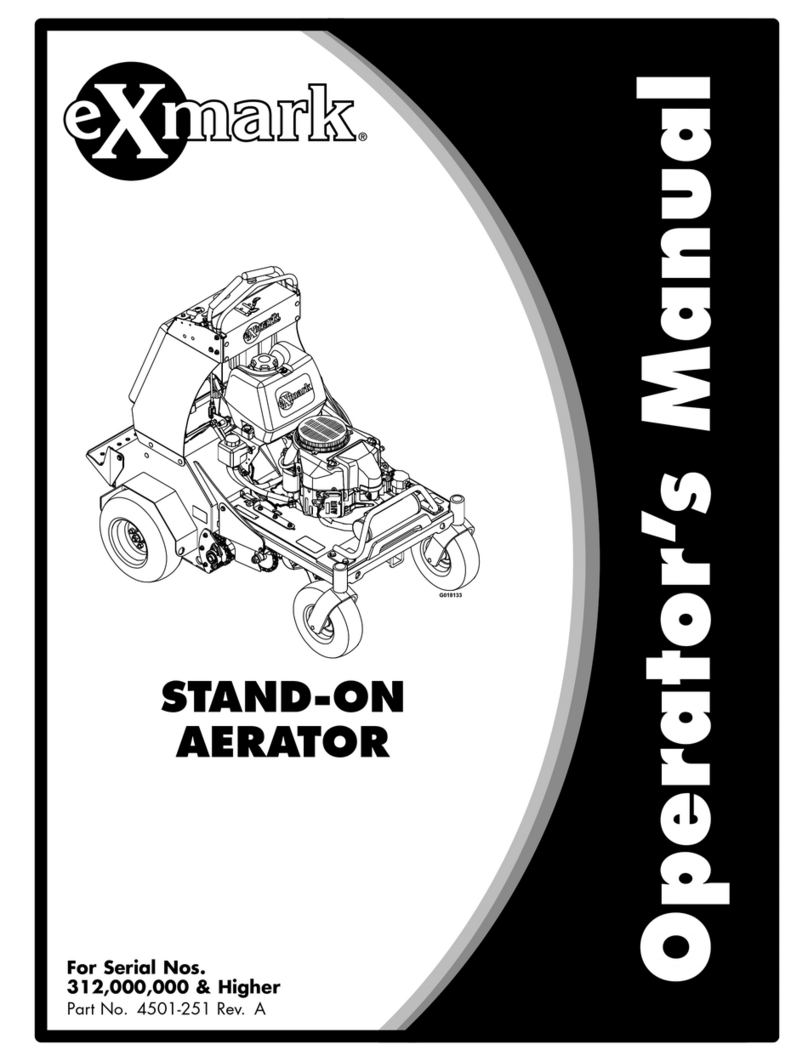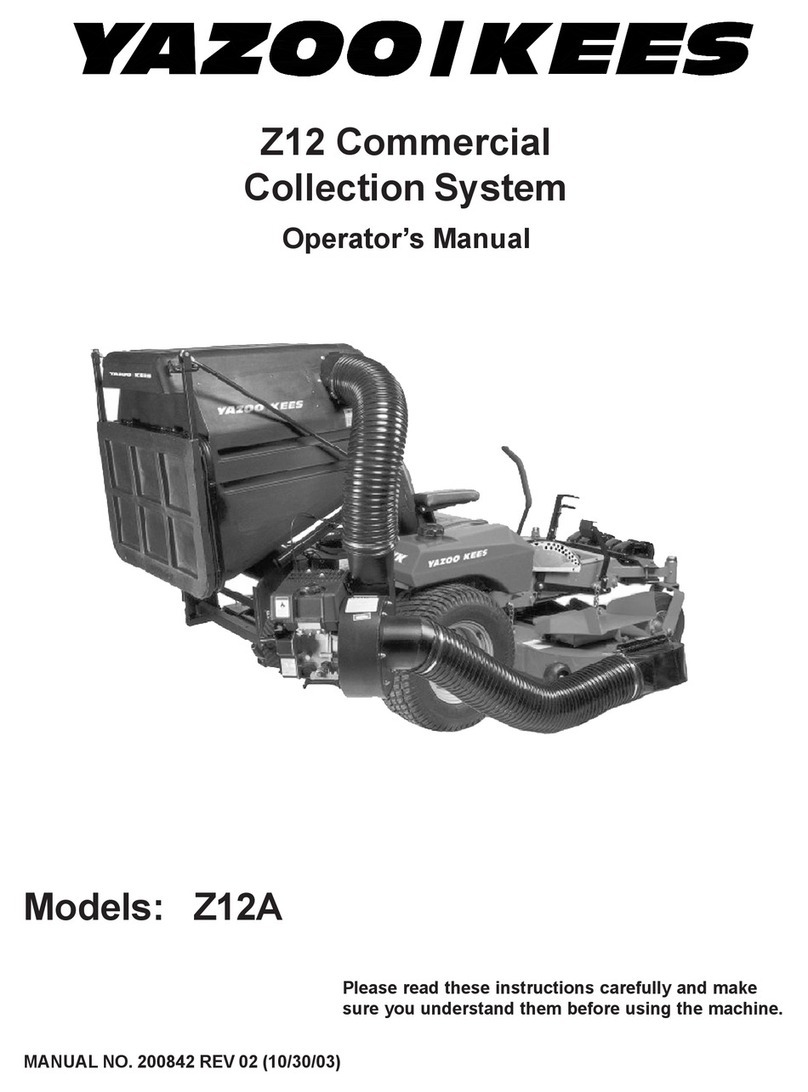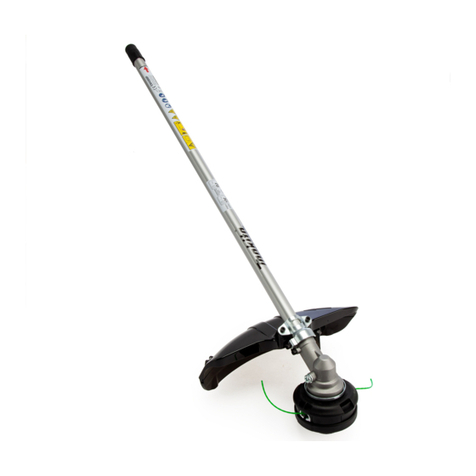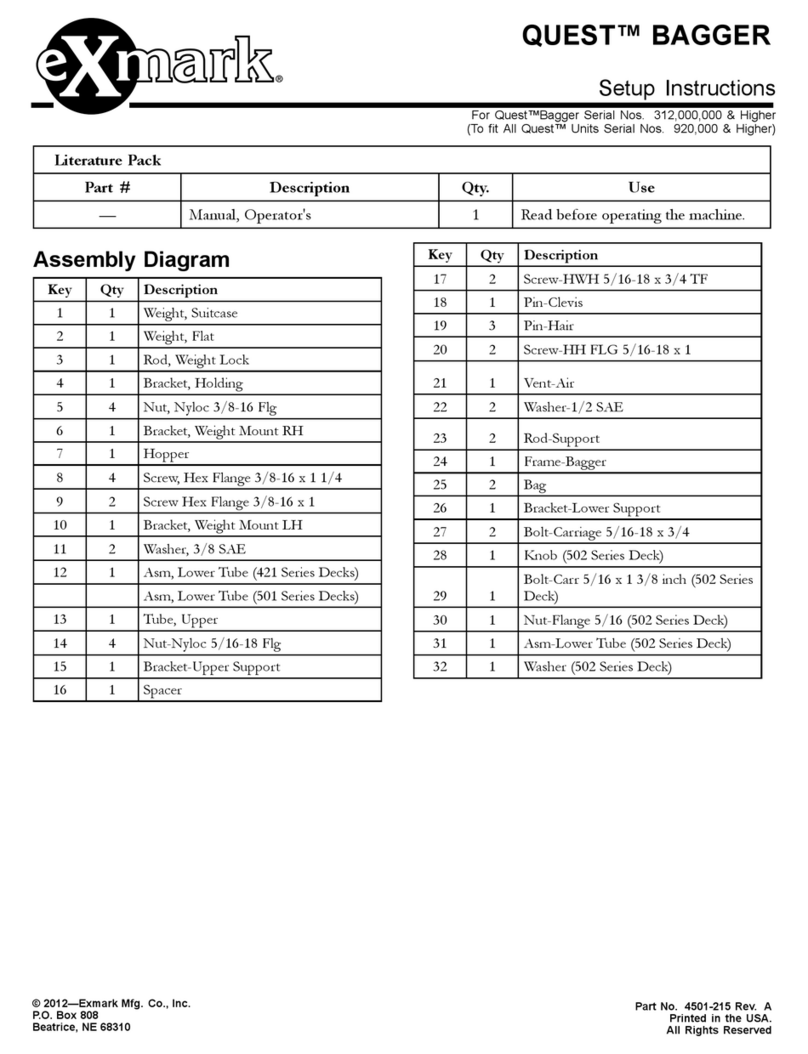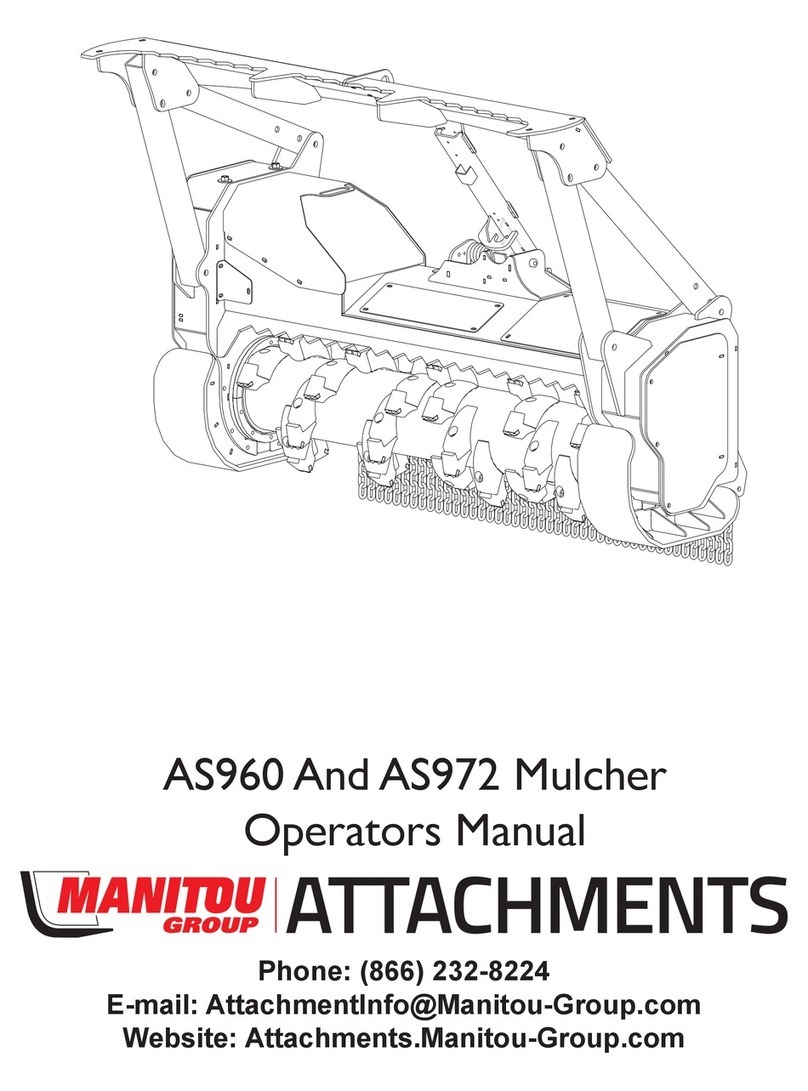
Page 3
Testing the Sprayer
NOTE:
It is VERY important for you to test your sprayer with plain
water before actual spraying is attempted. This will enable
you to check the sprayer for leaks without the possibility of
losing any expensive chemicals.
Read the operating instructions. When everything tests all right (no
leaks and good pressure,), add the desired chemicals to the mixture
and water combination and start your spraying operation.
Conditions of weather and terrain must be considered when setting the
sprayer. Do not spray on windy days. Protective clothing must be worn
in some cases
Be sure to read the chemical label(s) before application!
Operation
Your sprayer is equipped with (1) ON/OFF switch in the wire assembly
that you hook up to your battery. The “-” is the “ON” position and the “o”
is the “OFF” position for the switch. Make sure the switch is depressed
in the “-” position for operation.
The pump is equipped with a pressure switch that is factory pre-set for
it to shut off at 35 p.s.i. This switch assembly is the ‘square box’ on the
head portion of the pump.
Always fill the tank 1/2 full with water first and then add the chemical
slowly, mixing as you pour the chemical into the tank and then fill the
rest of the way. You may use the handgun to spray into the solution in
order to mix the chemical and water.
Initially begin spraying by opening the handgun. This will enable the air
in the line to be purged through the handgun tip, while building
pressure.
The pumping system draws solution from the tank, through the strainer/
filter and to the pump. The pump forces the solution under pressure to
the handgun and/or boom nozzles.
Activate the handgun by squeezing the handle lever
Rotating the adjustable nozzle tip on the handgun will change the
tip pattern from a straight stream to a cone pattern (fine mist)
After Spraying
After use, fill the sprayer tank part way with water. Start the sprayer and
allow the clear water to be pumped through the plumbing system and out
through the spray nozzle. Refill the tank about half full with plain water
and use FIMCO Tank Neutralizer and Cleaner and repeat cleaning
instructions above. Flush the entire sprayer with the neutralizing/cleaning
agent, then flush out one more time with plain water. Follow the chemical
manufacturer’s disposal instructions of all wash or rinsing water.
WARNING: Some chemicals will damage the pump valves if
allowed to soak untreated for a length of time! ALWAYS flush the
pump as instructed after each use. DO NOT allow chemicals to sit in
the pump for extended times of idleness. Follow the chemical
manufacturer’s instructions on disposal of all waste water from the
sprayer.
Winter Storage
Drain all water out of your sprayer, paying special aenon to
the pump and handgun. These items are especially prone to
damage from chemicals and freezing weather.
The sprayer should be winterized before storage by pumping a
soluon of RV anfreeze through the enre plumbing system.
This anfreeze soluon should remain in the plumbing system
during the winter months. When spring me comes and you are
preparing your sprayer for the spray season, rinse the enre
plumbing system out, clearing the lines of the anfreeze
soluon. Proper care and maintenance will prolong the life of
your sprayer.
Checking/Cleaning the sprayer’s filter/screen:
Empty the tank
Unscrew the knurled nut from the tank.
Swing (swivel) the intake assembly towards you. Look in the nut
you JUST unscrewed. There is a screen/washer there.
Remove the screen and clean as necessary. Replace when
done and reassemble the entire assembly.
Motor runs, but no pressure:
CHECK:
Both the counterweight and the bearing need to spin freely and both
need to spin INDEPENDENTLY of each other. If these 2 pieces are
‘stuck’ together, you will need to break them free and whether or not
they are sticking, spray some good quality lubricant or something
similar on them and let it soak in and this should restore most of you
prime.
